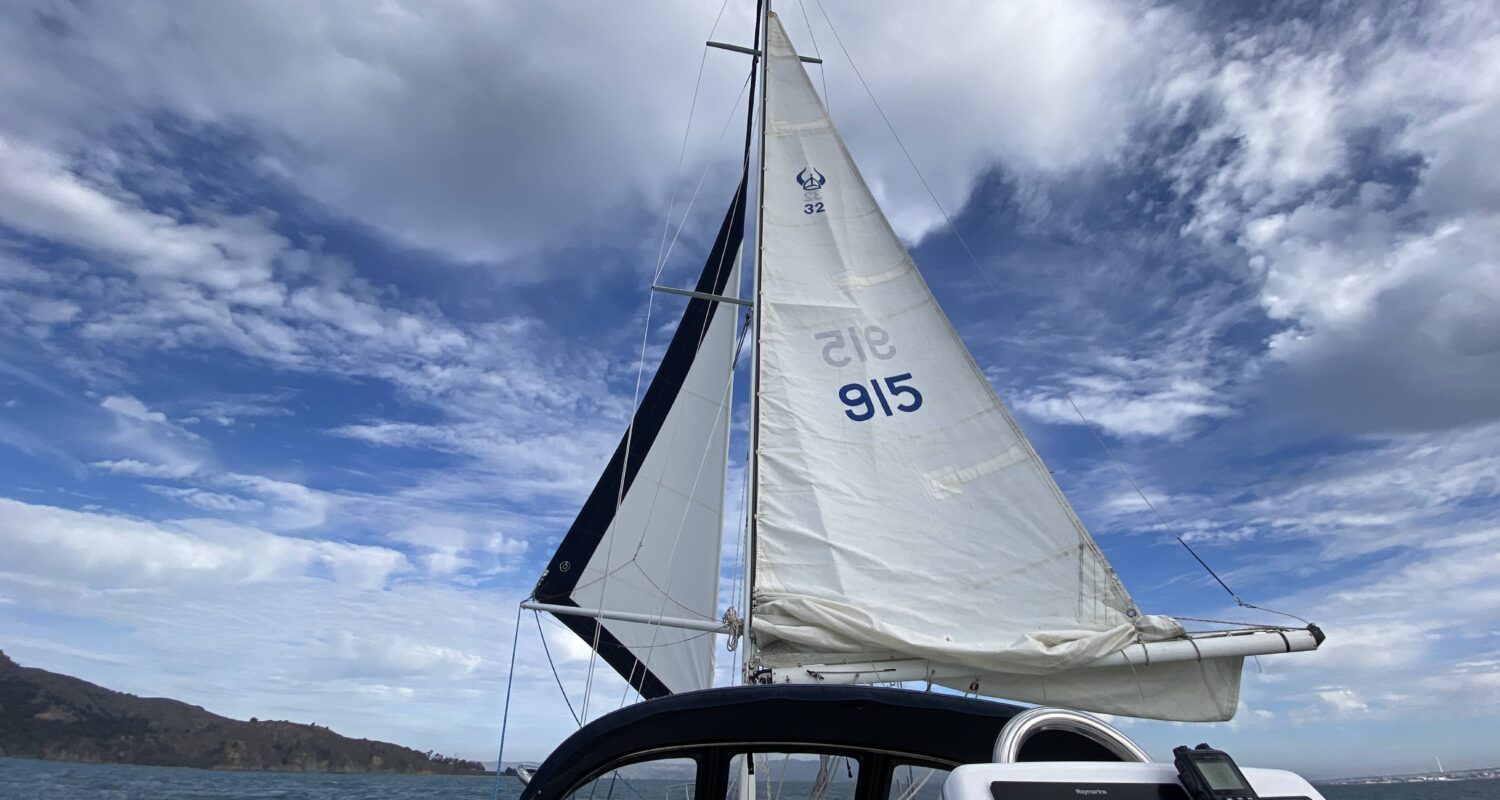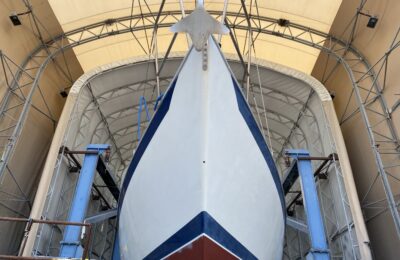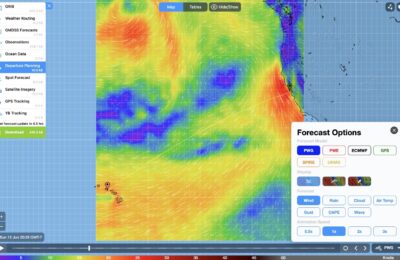With the purchase of my boat I inherited an under-sized whisker pole that I subsequently sold. Nevertheless I wanted to learn how to set a pole for a headsail as part of a wing-on-wing downwind, tradewind, get from California-to-Hawaii-and-back journey. On Craigslist I could not find any whisker poles but I found a spinnaker pole for sale that was the right size for my boat for a good price ($225) and I bought it.
The pole itself was beat up and one fitting did not match my boat. One can connect a whisker pole to a mast either with a jaw-ring connection, or a toggle-style. The ring seems to be perceived as lighter weight but permits an end-to-end gybe with a symmetric spinnaker. The toggle is sturdier but requires a pole-dip gybe. I’ve never done either type of gybe and have never had a spinnaker – I just wanted to make the pole work with my existing set up to practice poling out my jib.
It took some doing, but I knocked the toggle fitting out of my new-used spinnaker pole.
I bought a jaw-type fitting from Defender for the pole and I glued it in place with some 4200. I also bought some stanchion chocks for storage.
My last step was to paint white the marred pole to match my other lovely white spars. I used Interlux Brightsides paint. Side note: Despite looking much larger, the white spinnaker pole (hanging from the ropes) weighs only 13 lbs, while the new silver anodized telescoping whisker pole I purchased afterwards weighs nearly twice as much.
I finished rigging my spinnaker pole with a bridle and jaw-operation lines such that I could open either end fitting.
I received useful tips from the Ericson Owner’s forum on how to set a whisker pole while single handing. Here’s a good video of how one experienced sailor does it.
Thursday’s forecast called for wind out of the West at 8-10 knots in the San Francisco Bay. I thought it would be a good opportunity for me to head out and see if I could get my jib sail set with a pole without getting into too much trouble. Of course, the forecast was inaccurate and I found that just south of Angel Island I had 15kts of wind gusting to 20.
No matter – my reefing practices have improved and so I dropped the main, set my second reef and furled my jib. Predictably, once I had these operations complete the wind settled back down to 10-12 knots.
I pointed the boat downwind and set the autopilot. I pulled the pole from the chocks and connected the outboard end to the jib sheet. Then the topping lift to the bridle. Then finally I hoisted the lift line and clicked the inboard pole end to the mast ring.
The first thing I noticed was how the boat immediately settled. Trying to sail wing-on-wing without a pole leaves the jib flopping back and forth, up and down. Lots of canvas with little tension. The pole fixes the jib clew much more rigidly and that makes the sailing much steadier immediately.
The second thing I realized was my main sail was pressed against my shrouds, so I pulled it back with my traveller.
The goal for this sail plan is to make the boat ready to sail directly downwind to an intended destination (like Hawaii!). But of course for a long trip like that I would want to use the wind vane at the same time, so my final experiment for the day was to let my Aries take over and try to sail us all the way to Berkeley.
I think I could have made it to the mud flats without touching the wheel, but eventually I knew I would be late for dinner. So, I brought down the whisker pole, turned the boat and headed back for Sausalito.



